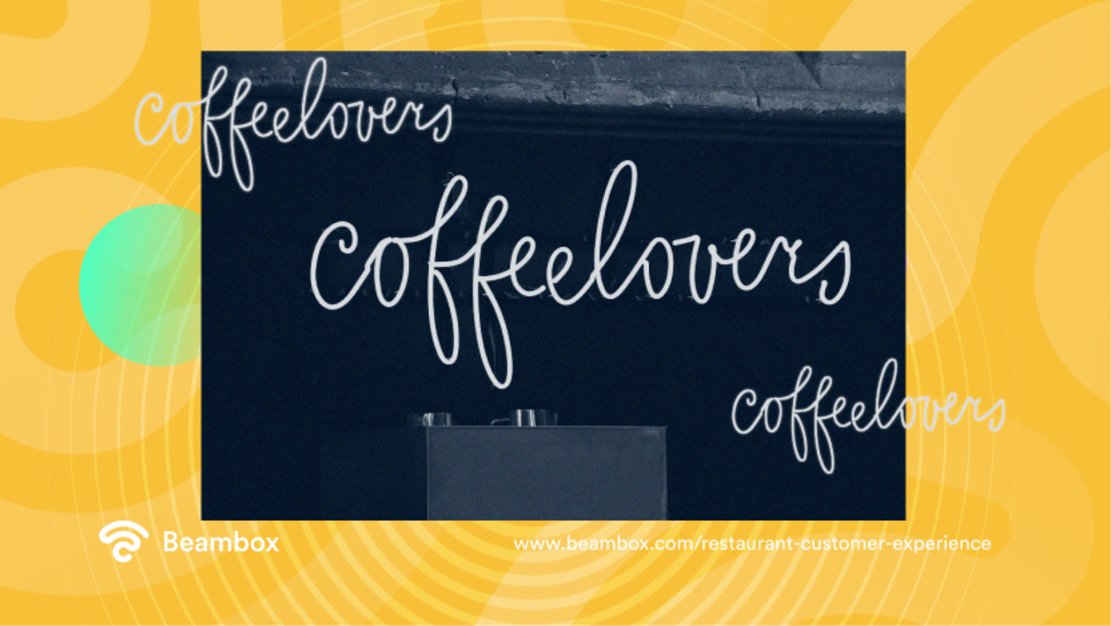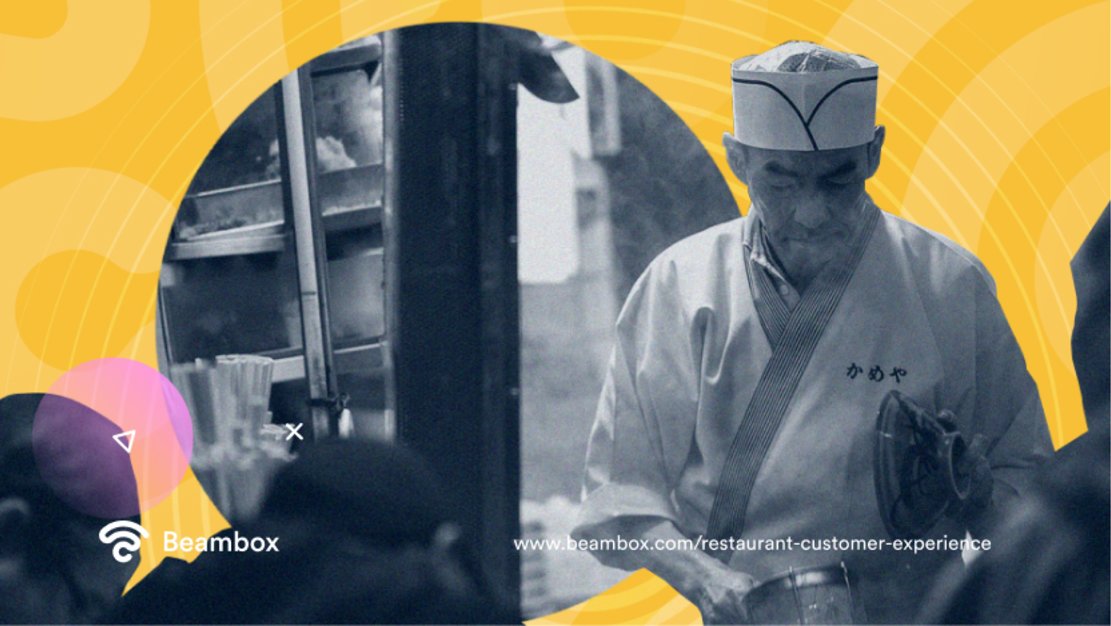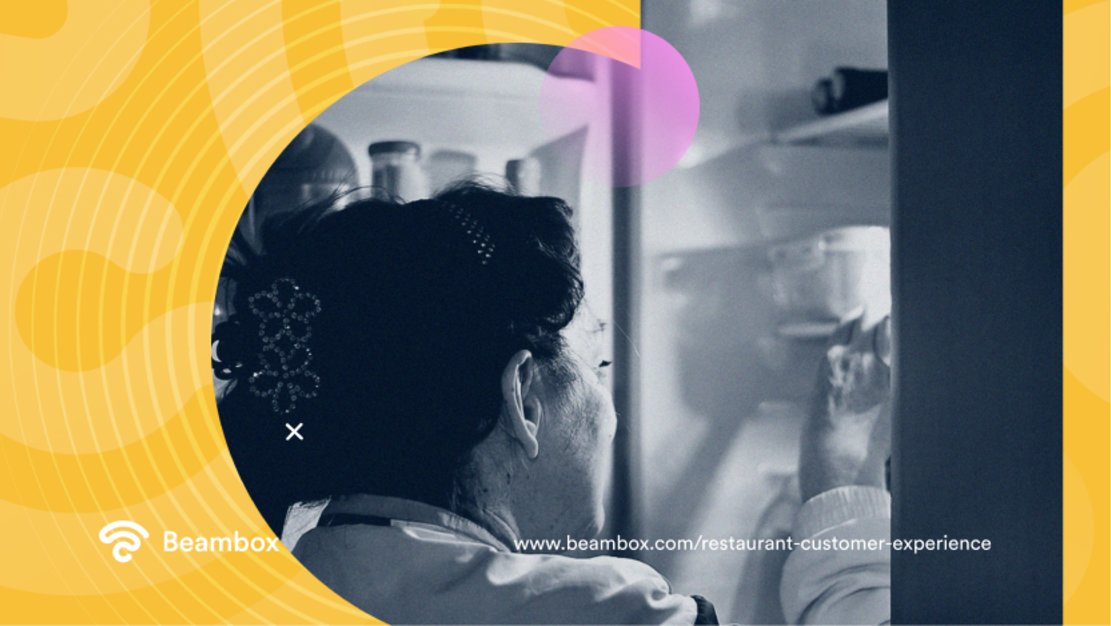
Restaurant customer experience is at the heart of every hospitality business. As soon as a customer enters your doors, there are expectations to uphold. An experience that this customer envisions. It might seem a lot to handle, but that’s why we’ve created this guide. With actionable insights, you can use customer expectations to your advantage. Who doesn’t want a successful restaurant? Well, a positive guest experience is a way to achieve that.
A positive guest experience will leave this customer happy - perhaps leaving a large tip or positive online reviews. A negative guest experience leaves them unhappy. This is the restaurant customer experience you want to avoid. Negative guest experiences give you customer complaints to deal with and damage your business.
This guide will introduce you to everything you need to know about customer experience. From boosting customer satisfaction to insights on why you should care, here’s a collection of our top tips.
A Restaurant Customer Experience Definition

So, let’s first break things down with a classic definition. Our restaurant customer experience definition is as follows:
‘The guest experience that customers receive when interacting with your business - whether in-person or remotely via communication methods.’
Guest experience is a super simple concept. It is simply how guests feel and what they think about their experience dining at your restaurant. If you provide quick wait times, your guests will find the experience thoughtful and efficient.
If servers take time explaining ingredients to someone with dietary requirements, they’ll think your business is professional and caring. Guest experience is rooted mainly in emotion. And when analyzing it, ask yourself whether your guests felt seen, heard, and respected.
Of course, as our definition shows, customer experience isn’t just in-person. It is how guests feel when interacting with your business remotely. For instance, did they have a positive experience when ringing with a query? Were your social media team prompt with customer complaints resolutions? You can control your customer experience as much out of the restaurant as you can inside it.
Restaurant businesses need to recognize the holistic nature of customer satisfaction. Don’t make this mistake. Remember that the definition of customer experience includes interactions outside the realms of four walls.
An Example: Customer Experience
While we are defining a restaurant customer experience, let’s look at a quick example. Ask yourself what key factors make this a negative experience despite a positive outcome.
Jessie rings up Marvin’s Milkshakes. She takes her daughter and friends to a birthday party that afternoon. However, one of the children’s parents has just informed her that her child is dairy intolerant. Jessie is anxious to get an answer and stressed because she is late for her morning work shift. When the phone answers, the staff member says there are no dairy-free milkshake alternatives. Jessie is disappointed but understands.
Later, when the party arrives at Marvin’s Milkshakes, Jessie sees that the staff member was wrong and there is a dairy-free option. She feels that the staff member on the phone did not take her inquiry seriously. To Jessie, Marvin’s Milkshakes does not appear as a professional restaurant - even though the child had a dairy-free milkshake.
It is easy to think that a positive outcome means a positive customer experience. That is only sometimes the case, though. In this example, you can see how little interactions and mistakes can drastically impact guest experience. It is essential to be attentive to these details when achieving customer satisfaction.
Why Restaurant Customer Experience Matters

Restaurant customer experience matters because it is the face of your business and its reputation. If a restaurant has terrible past customer experiences, you can immediately tell. Its social media and Google reviews will be plastered with negativity. Unhappy customers are vocal customers. When managing how the world views your restaurant, overlooking the customer experience is vital.
Online reviews and business reputation are the primary reasons why customer experience matters. However, even if those with a negative experience don’t spread negative impressions, it is essential. For instance, those with a positive experience are more likely to return.. A considerable proportion of business comes from repeat customers. So keep that in mind when evaluating your current customer experience.
A memorable customer experience that people can look back on fondly is the perfect way to attract regulars. In short, keeping your customer experience positive will allow you to continue running. A fantastic guest experience means more profits for you.
Key Elements of Restaurant Customer Experience

Customer experience encompasses all interactions - from phone call queries to waitress and waiter service. Similarly, there are different elements that customers look for in their restaurant customer experience. If you tick off each element, you are more likely to please your customer. Think of it like a checklist.
Guests want high food quality. They want fantastic customer service. Often, they want a location experience as well. Location experiences could be rooftop dining experiences with city views or scenic al fresco sit-down locations. The list can seem endless. To simplify things, we’ve broken the key elements of customer experience into the must-haves for in-person and remote interactions.
These are our top suggestions when it comes to critical elements of in-person customer experience:
- Tasty and well-presented food.
- Food hygiene evidenced by a food brand protection examination.
- Informative and attentive customer service.
- An aesthetic and memorable restaurant interior or seating area.
- An ample time before the table turns over - not rushing them out of the door.
- A pleasant restaurant location.
- Cleanliness of the restaurant.
- Updated menus and high-quality cutlery and glasses.
Of course, not all customer experience occurs when the customers are at your restaurant. Customer experience also extends to people’s interaction with your business - including on social media. These are our top suggestions for vital elements of customer experience when customers aren’t actually in your restaurant:
- A feedback system - for customer complaints or positive feedback.
- Loyalty programs.
- Respectful and purposeful contact when sending marketing material like announcement emails.
- Helpful phone assistance.
- Quick response times on social media, emails, and phone calls.
How To Improve Customer Experience in Restaurant Businesses

You know why restaurant customer experience is essential. You know all about the different elements of customer experience. So the question is how to improve customer experience in restaurant businesses.
Improving customer experience is a marathon rather than a sprint. As a restaurant owner it relies on you taking active steps to change how your business runs. It also requires you to think objectively, not subjectively, about your business - which can be challenging. Luckily, we’ve got some great solutions lined up for you. If you use these five solutions, you can see improvements in as little as a week.
1. Improve Food Quality To Create a Positive Restaurant Customer Experience
Improving food quality is an obvious suggestion for creating a positive restaurant customer experience. After all, food is why everyone is here, right? It is one of the most obvious ways to improve the customer experience at your restaurant. However, it is also a thing many people avoid. Food quality is often tied up with ego and subjectivity. So the key step for this improvement is to stay as objective as possible.
The first aspect of food quality to consider is food hygiene. What is your food hygiene score, and how can you raise it? It’s vital to display your food hygiene rating (given by an external party) to be transparent with customers. Work hard to get a good rating and display it for all.
Food quality also relates to presentation and portion size. Don’t be misleading about portion sizes; take care with the presentation. Food quality is as much about your pride in food as anything else. So treat each dish individually rather than rushing to throw out as many spaghetti bolognese as possible.
2. Increase Time per Table To Boost Restaurant Customer Experience
One of the most disheartening things for customers is being rushed out almost as soon as they’ve sat down. Fair enough if you have let a walk-in slip in between bookings. If they understand that this is under a strict time limit stipulation, that’s okay. These customers will just be happy that you’ve been so flexible. But generally, a short turnover time per table is generally a surefire way to get a negative customer experience.
Customers may have booked for a special occasion. They may have also waited for a long time to bag a reservation. Treat that with respect and allow plenty of time for guests in each reservation.
3. Have Employee Feedback Sessions To Improve Restaurant Customer Experience
You can’t improve if you don’t know where you are going wrong. Hosting employee feedback sessions is one of the most valuable ways to boost your restaurant’s customer experience. Some server tips and tricks go a long way.
This is a chance to tell employees exactly how to improve and celebrate their strengths.
Rather than just getting a job, employees get a form of professional development. And your guests will thank you as your customer service continues to improve.
4. Take Pride in Visual Appeal to Rocket Your Restaurant Customer Experience
There’s a difference between a restaurant an owner is proud of and a restaurant existing to pay the bills. Take pride in your business. And one of the best ways to do this is by keeping the theme of your restaurant visually attractive. Rather than a dated interior, keep your restaurant freshly decorated and trendy.
Similarly, if there is a bonus of being in your location, use it. Putting a window or balcony in would allow fantastic views instead of a boring wall. Be creative and consider reinvesting in visual appeal.
5. Be Proactive Managing Customer Complaints
Finally, proactively manage customer complaints to improve your restaurant customer experience. Customers need to trust your business. You portray your business as professional when you respond quickly and effectively to customer complaints. Don’t sweep negativity under the rug - it won’t go away. Often ignored customers continue to get more irate as well.
Be proactive in managing your complaints system and watch the benefits roll in.
Final Thoughts: Starting To Improve Your Restaurant Customer Experience Today
Building a positive customer experience in restaurant businesses is essential. Your restaurant customer experience is the key to your success. And the best part is that it is easy to start immediately. You can set aside 15 minutes today to dedicate to simple tasks. For instance, you are boosting customer experience by replying to customer feedback, organizing an employee feedback session, or researching food presentation inspo.
Are you looking for some extra help? Managing your restaurant customer experience can be overwhelming, but at Beambox, we are always happy to help. As experts in assisting restaurants, we can help start your journey toward success. Outsource to us, and let’s take the following steps together.
Let’s get the ball rolling today. Beambox offers the best all-in-one wifi marketing platform. We leverage a dynamic approach to connect, capture, and keep more customers. Start your Beambox free trial today, and let us help you maximize your business potential.
Get Started With Free WiFi Marketing
Beambox helps businesses like yours grow with data capture, marketing automation and reputation management.
Sign up for 30 days free